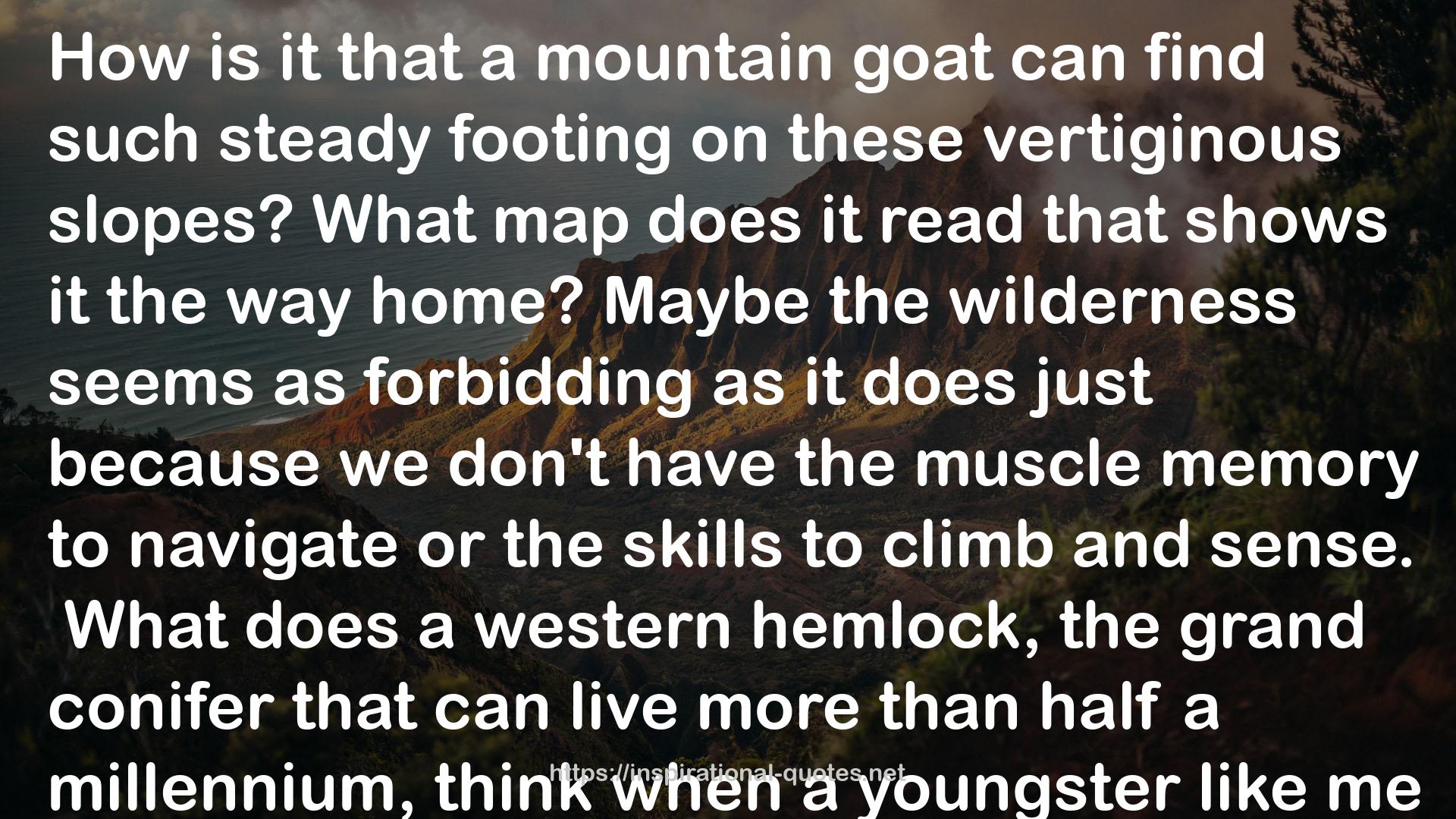" How is it that a mountain goat can find such steady footing on these vertiginous slopes? What map does it read that shows it the way home? Maybe the wilderness seems as forbidding as it does just because we don't have the muscle memory to navigate or the skills to climb and sense.
What does a western hemlock, the grand conifer that can live more than half a millennium, think when a youngster like me comes along? Chanterelle mushrooms got to know this tree, finding ample places to grow at its feet. Native Americans got to know this tree too. They understood that its bark was edible and a good base for cakes, and that its young needles could be brewed into a tea rich in vitamin C. The Coastal Salish peoples of what is now Canada built shelters for menstruating women using western hemlock branches, and this species was said to have particularly feminine energy.
What if the "problem" with the wilderness isn't a problem with the wilderness at all but rather with us, with our lack of knowledge, and with our truncated imagination? The wilderness reminds us that things aren't usually as simple or one-dimensional as they seem. Our stereotypes of such spaces imagine them as places of exile, spaces of lifelessness. That would be a surprise to the creatures that call it home.
Perhaps the real struggle is ours. We don't like knowing. Indeed, we fear it. "
― Rachel Held Evans , Wholehearted Faith
Image for Quotes

Perhaps the real struggle is ours. We don't like knowing. Indeed, we fear it." style="width:100%;margin:20px 0;"/>
 Perhaps the real struggle is ours. We don't like knowing. Indeed, we fear it." style="width:100%;margin:20px 0;"/>
Perhaps the real struggle is ours. We don't like knowing. Indeed, we fear it." style="width:100%;margin:20px 0;"/>